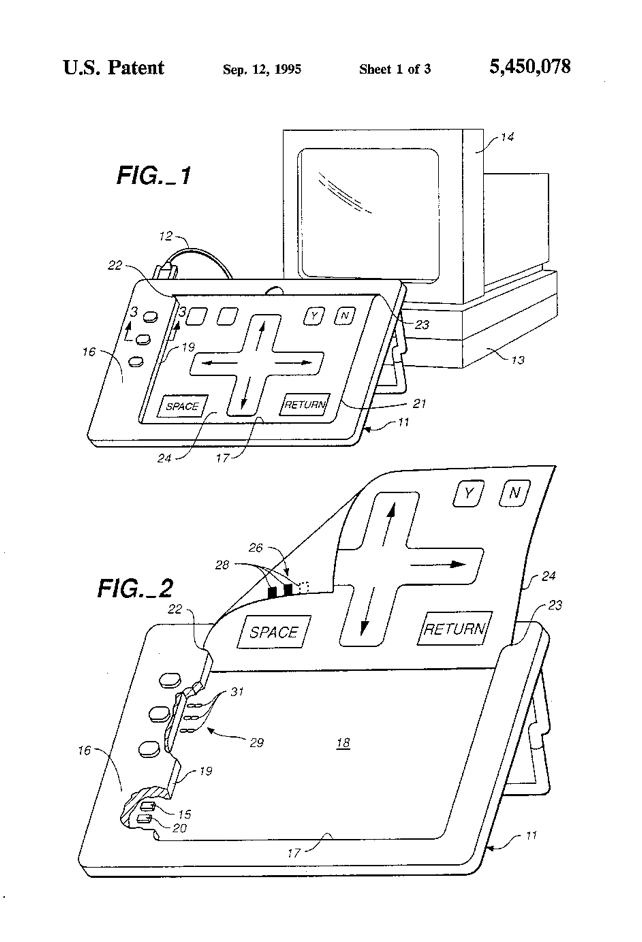In 1979, Steve Gensler, a resident of Oakland, California, started Unicorn Engineering after creating a computer keyboard that could be used by a friend with cerebral palsy. Gensler taught himself electronics in order to build a keyboard with large, flat buttons that were programmable, so that the computer could be instructed to respond to any key in any manner desired. Gensler’s accessible computer technology start-up became IntelliTools in 1991, with Arjan Khalsa at its head. Khalsa, a teacher in the Bay Area, had become interested in accessible computer technology in the mid-1980s. Khalsa attended a class on mainstreaming special education students in the Berkeley area and was struck by the role technology played in accommodating disabilities, as well as the obstacles technology imposed when it was not designed to be accessible. Shortly thereafter, Khalsa happened to catch a radio program discussing a book on computers for people with disabilities, and he contacted the author for more information. The author directed Khalsa to a local disability and technology advocacy group, where he met Gensler. Moved by the meeting he attended, Khalsa threw himself into working with people with disabilities and computer technology.[i] Khalsa partnered with Gensler, in 1985, and then became the CEO of IntelliTools.
In 1992, Khalsa and three Intellitools engineers applied for a patent for the successor to the Unicorn Board, IntelliKeys, which was granted three years later. The patent, “Membrane Computer Keyboard and Method,” describes what made this keyboard particularly usable by people with disabilities. The patent compares a traditional keyboard to the IntelliKeys board; the former requires roughly the same level of dexterity as operating a typewriter, whereas the latter can have “keys” of any desired size and configuration and assigned for any function, making it operable by people with varying degrees of motor control. Instead of the individual keys found in a standard keyboard, IntelliKeys had a flexible membrane covering hundreds of switches. The membrane could be divided into any number of programmed sections, each covering a number of switches. Each section, or “key,” would be plotted out on a card that covered the entire membrane. As the labels on the overlay were customizable, users could display whatever symbols, colors, numbers, or words suited their needs.

When a user pressed anywhere on the overlay within an area assigned to some function, the flexible membrane would activate the switches underneath, and the computer would read the switches. This level of customization allowed the keyboard to meet the needs of any user able to press a button of any size. In addition, unlike earlier versions of adaptive keyboards, the patented invention did not require any form of interface device between the keyboard and computer, instead using a standard keyboard cable. This greatly simplified the use of the keyboard, making it functional with different computers.
In 1984, rehabilitation researchers at a Closing the Gap conference described their use of the Unicorn Model 1 Keyboard for their clients with disabilities.[ii] Their Unicorn Board could be programmed to have up to 128 keys that performed different functions (the later IntelliKeys model increased this to 576 keys). Because the keyboard was this flexible, it could be programmed to optimize the user’s interaction with it in operating specific software. That is, only those keys needed to control the desired software had to be used, and they could be the size the user could best operate; no extraneous keys would be present that the user might accidentally press. Additionally, the researchers found it advantageous that the most frequently used keys could be programmed to be those easiest to reach.
IntelliKeys found success not only in terms of commercial sales but also in recognition as a product to aid people with disabilities. In 1992, Khalsa and IntelliKeys won First Place in the Johns Hopkins National Search for Computing Technology to Benefit People with Disabilities. IntelliTools continued selling its keyboards for the next twenty years. The company was bought out by Cambium Learning in 2006 and has changed hands a few times since. In 2014, its current owner AbleNet ceased manufacture of the keyboard, having moved away from customizable keyboards. Other companies now sell similar adaptive keyboards but to be used on touchscreens not as separate peripherals. [iii]
By Dr. Elizabeth Petrick
[i] Jack Kenny, “Bridging the sensory divide,” TES Magazine, Oct. 16, 1998, www.tes.co.uk/article.aspx?storycode=79600.
[ii] James H. Heller, David Salisbury, and Judith C. Lapadat, “The Unicorn Model 1 Keyboard As a Rehabilitation Tool,” in Computer Technology for the Handicapped: Proceedings from the 1984 Closing The Gap Conference, ed. Michael Gergen and Dolores Hagen (Henderson, MN: Closing the Gap, 1984), 68–70.
[iii] This article is expanded from Elizabeth R. Petrick, Making Computers Accessible: Disability Rights and Digital Technology, (Baltimore, MD: Johns Hopkins University Press, 2015), pgs 48-49.
